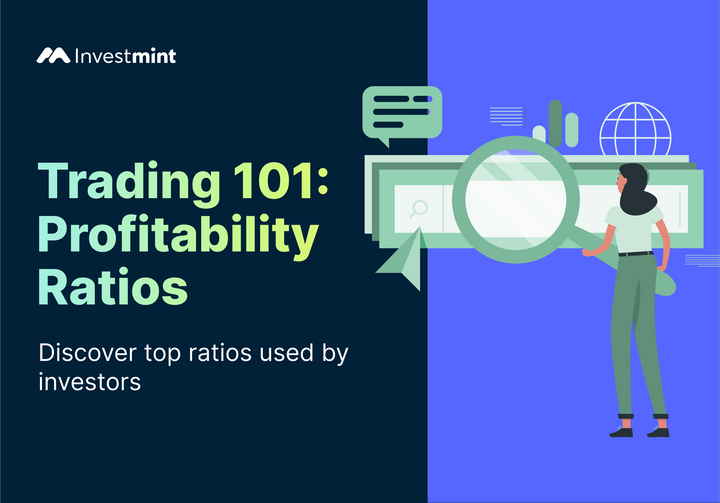Most Common Trend Indicators For Trend Trading
Do you follow the trend and take trades accordingly? Read this and find out strategies, advantages, limitations, and more.

Introduction
Have you ever looked at a stock chart and wondered, "Is this the right time to buy or sell?" If you have, you're not alone! With a win rate of around 30-40%, this is where the trend indicators swoop in to save the day. Trend trading is one of the hottest strategies in the current trending chart.
Trend trading is more complex than buying and selling stocks when they rise and fall. A trend trader uses technical indicators to determine the strength, permanence, and likelihood of a trend continuing.
To become a master trader trading with the trend, you must know various trends and their meaning. So, without further adieu, let's get into the article.
What Is Trend Trading Or Trend-Following?
Trend trading, also known as trend-following, is a popular trading strategy used in various financial markets, such as stocks, commodities, currencies, and cryptocurrencies. An important aspect of trend trading is determining the market's momentum using technical indicators.
Trading markets exhibit a certain level of predictability, allowing traders to capitalise on this by analysing them. During the period of trends, investors can accumulate securities at lower prices before they rise and sell them at higher prices before they fall.
How Does A Trend Emerge?
A trend emerges in a financial market when there is a sustained and prolonged movement in the price of an asset in a specific direction. Trends can be upward (bullish), downward (bearish), or even sideways (range-bound), and they emerge in the stock market for numerous reasons. For example,
- Market Sentiment and Fundamental Factors: Trends often start with a change in market sentiment or fundamental factors that influence the supply and demand for a particular asset. Positive news, robust earnings reports, economic indicators, geopolitical events, or changes in interest rates can all contribute to shifts in sentiment.
- Initial Move: A trend can start with an initial move in the asset's price. A significant event or development can trigger this move. For instance, positive earnings results for a company might lead to an initial surge in its stock price.
- Confirmation and Momentum: As the price moves in the initial direction, it starts to gather momentum. More traders and investors take notice and join the trend, causing the price movement to gain strength.
- Technical Breakouts: Technical analysis plays a massive role in trend emergence. Traders often use chart patterns, trend lines, moving averages, and other technical indicators to identify and confirm the emergence of a trend. For example, a breakout above a critical resistance level could signal the beginning of an upward trend.
- Herding Behavior: Traders often follow the crowd. As a trend gains momentum, more market participants join in, driven by the fear of missing out (FOMO) on potential profits. This herding behaviour can further accelerate the trend.
Advantages & Disadvantages Of Trend Following
Different Types Of Trends
Investors can identify trends early and exit before reversing using trend trading strategies. Generally, technical indicators are classified into uptrends, downtrends, and sideways movements.
- Uptrend
In the case of an uptrend, a trade's market price increases as it accumulates value. As the market reaches increasingly high levels, long positions are taken by traders who wish to exploit an uptrend. A share price that rises by 20, falls by 10, rises by 25, and falls again by 15 is deemed an uptrend since it is both making higher and lower lows.
- Downtrend
When a security's market price declines, it's considered a downtrend. Typically, trend traders will enter a short position at the lowest point of the security price, i.e., when the price starts falling. An example of stocks in a downtrend is if the price drops by 50, then goes up by 25, then falls again by 40, then goes up by 10. Stock prices fall in a downtrend because they hit lower lows and higher highs.
- Sideways Trend
Occasionally, securities' market prices remain static. A price can't reach a higher or lower level. A sideways trend is one such trend. The trading trend tends to ignore these trends for the most part. Scalpers tend to benefit from sideways markets when seeking short-term gains.
Top 6 Trend following strategies
Here are the 6 best indicators for trend trading in the investing world that are currently gaining attention.
- Simple moving average (SMA) crossover strategy
Traders and investors use the Simple Moving Average (SMA) crossover to identify and predict potential trends in the stock market. A simple moving average strategy involves determining the best time to buy or sell an asset using two or more different timeframes.
- Dual moving average (DMA) crossover strategy
Dual Moving Average (SMA) crossover strategies are widely used and utilise two moving averages. Based on the crossovers of these moving averages, this strategy also identifies market trends and generates buy or sell signals.
- Moving average convergence divergence (MACD) Strategy
A MACD strategy is the best indicator for trend trading, combining MACD and the signal line. Signal line crossovers can provide trading signals. An above-the-signal line MACD signal indicates a buy signal, while a below-the-signal line MACD signal indicates a sell signal.
- Bollinger Bands strategy
Bollinger Bands are trading indicators based on moving averages and standard deviations. Moving averages are recorded on the middle line, while standard deviations are shown on the upper and lower lines.
Trend following strategies mainly use Bollinger Bands. Uptrends typically result in the price remaining between the upper and middle lines of the indicator. Thus, the idea is to buy if the price falls between these two lines.
- Relative strength index (RSI) Strategy
RSI (Relative Strength Index) is a popular oscillator among financial markets and is used to gauge the strength of a market. Among other popular financial trading shows, Jim Cramer has likely discussed it more often. A momentum indicator measures how stocks, currencies, and ETFs are doing. The Relative Strength Index displays overbought and oversold conditions.
- On Balance Volume (OBV) strategy
On-balance is an indicator that measures trend and volume at the same time. The volume on 'up' days is added to that on 'down' days to compute the total amount of buying and selling pressure. Volume must confirm trends. If the price rises, the OBV will increase, and if it falls, the OBV will fall.
Trend Indicators Moving Averages
Various moving averages offer different perspectives on the market's trend, each with advantages. There are several types, including:
- Simple Moving Average (SMA). The formula for calculating a moving average is the Sum of Closing Prices / Number of Periods. When the stock price is consistently above the SMA, it could indicate an uptrend. Conversely, when the stock price is consistently below the SMA, it might suggest a downtrend.
- Exponential Moving Average (EMA). The EMA responds more effectively to current market conditions by focusing on recent price data. It is calculated using (Current Price - Previous EMA) * Multiplier + Previous EMA. This formula emphasises recent prices while also taking historical data into account.
- Weighted Moving Average (WMA). WMAs assign different weights to various data points over a given period. In this manner, traders can focus on more critical price points.
- Displaced Moving Average (DMA). Displaced Moving Averages are a variation of moving averages that involves shifting them forwards or backward in time. By performing this analysis, traders can predict price trends before they become evident.
Other Trend Indicators
Other than the ones mentioned above, these are some of the indicators that are widely used by traders worldwide.
- Ichimoku Kinko Hyo
The name Ichimoku Kinko Hyo means equilibrium chart at a glance. It is a comprehensive technical analysis tool developed by Japanese journalist Goichi Hosoda in the late 1930s. It is one of the most accurate and most accessible to use among traders. The Ichimoku Kinko Hyo consists of several components: a conversion line, a baseline line, a lagging span line, and a lead line. Chikou Span and Kijun-sen are two significant components of the Ichimoku Kinko Hyo. The Kijun-Sen is a medium-term moving average calculated over a more extended period. The Chikou Span, also known as the Lagging Span, represents the current closing price plotted on the chart.
2. Stochastic Oscillator
The Stochastic oscillator is a popular indicator used to detect overbought and oversold levels. This indicator consists of two lines: per cent D and per cent K. Aside from identifying upper and lower bands. It also helps traders identify the trend lines. A sell signal appears when the two lines cross above the higher band, whereas a buy signal appears when the two lines cross below the lower band.
3. Average Directional Index (ADX)
Developed by J. Welles Wilder, the ADX helps traders determine whether a market is trending or moving in a sideways range. Trend traders use this indicator to determine trend strength rather than the trend. The ADX is calculated based on the relationship between the Positive Directional Index (+DI) and the Negative Directional Index (-DI). These two indices are calculated alongside the ADX and provide insights into the strength of upward and downward price movement.
4. Advance-Decline Line (ADL)
The Advance-Decline Line (ADL) is a technical indicator used to assess a stock market's overall breadth, health, or index. It provides insights into the cumulative difference between the number of advancing and declining stocks in a given market over a specific period.
Bottom Line
Online trading has made these trend indicators more popular these days. Trend Indicators like these can be combined with other volume and momentum indicators to construct successful trading strategies. Although we have discussed all the trend indicators above, nobody can guarantee they will be 100% accurate. To invest correctly, trend followers must follow a proper risk management strategy.



